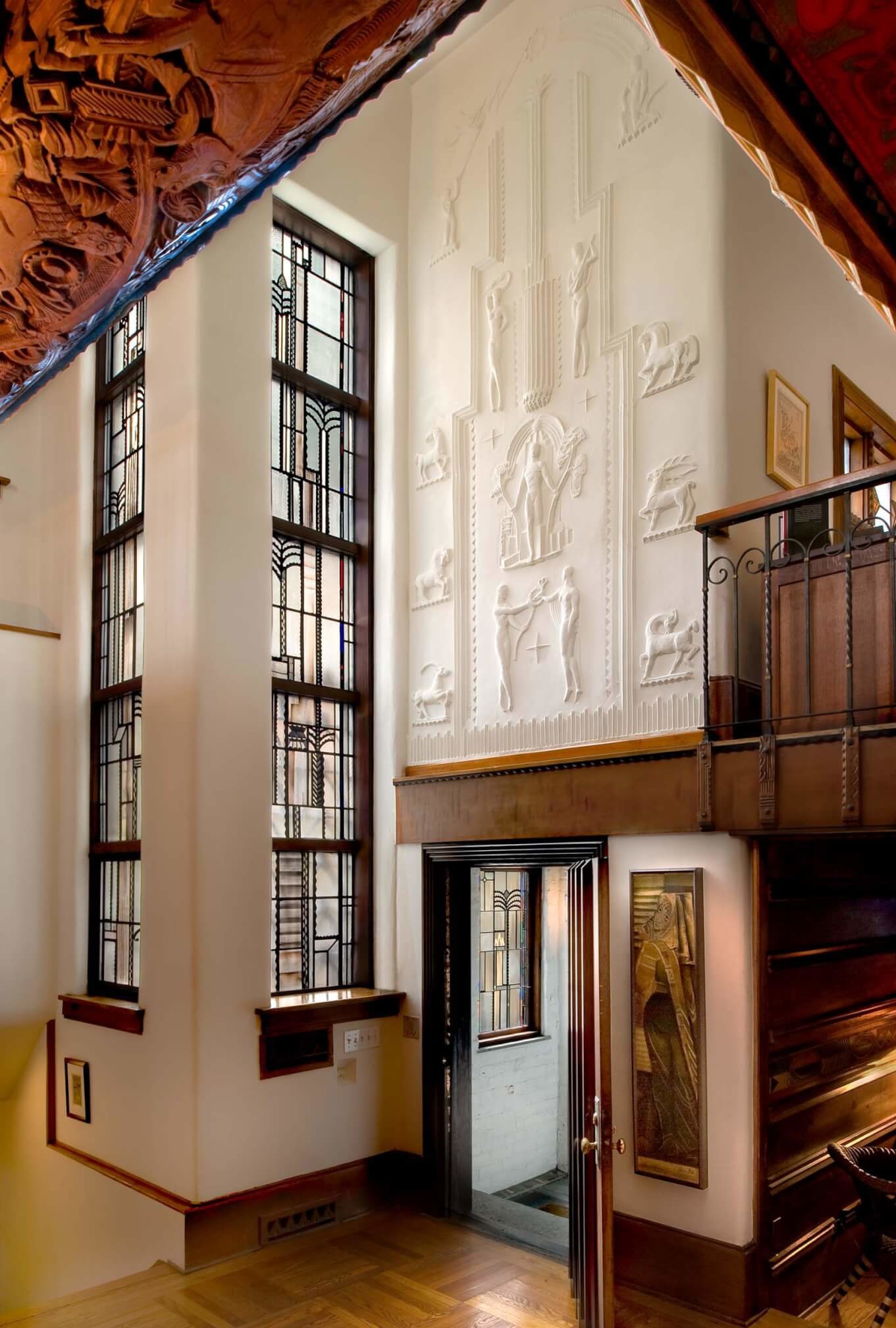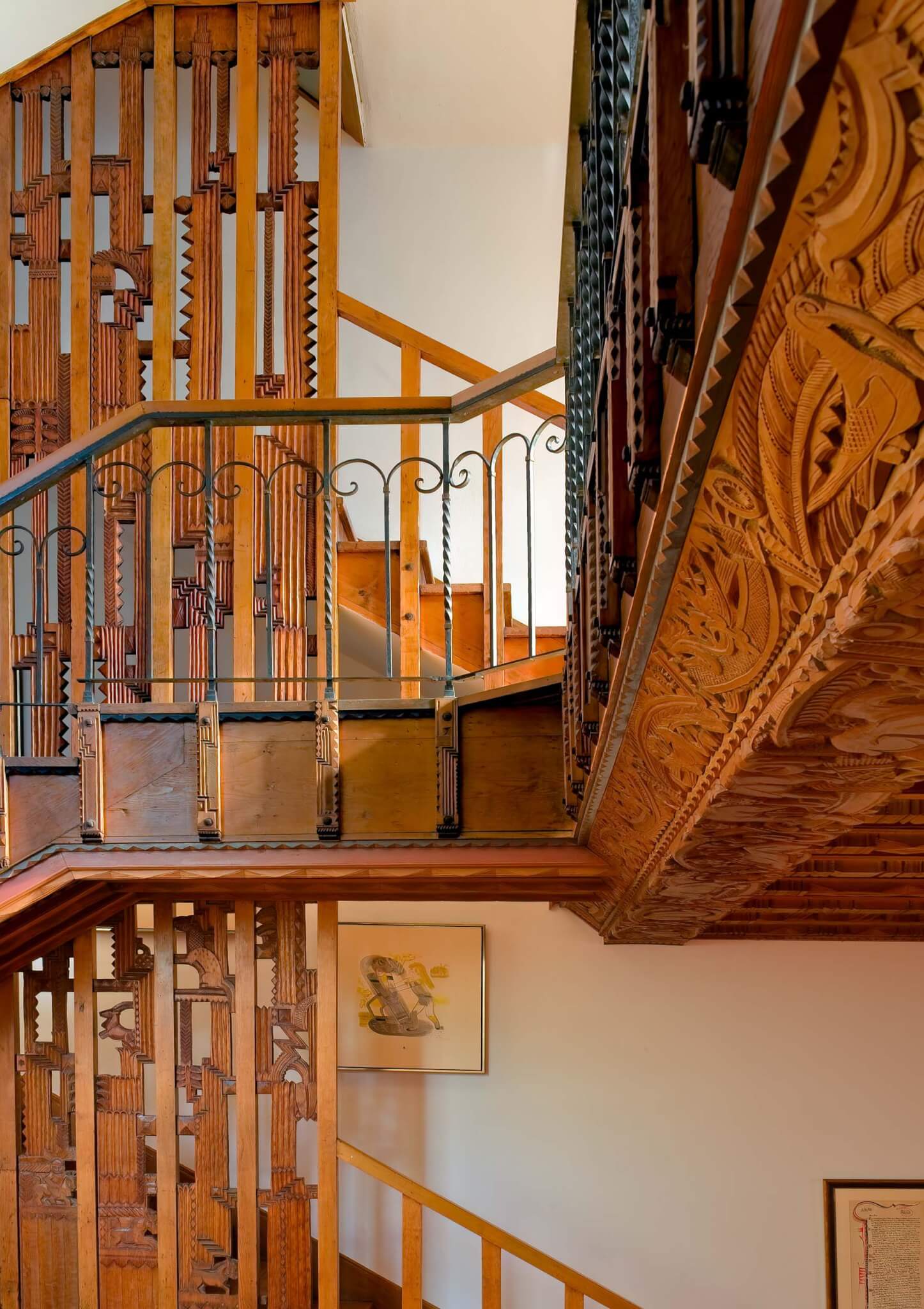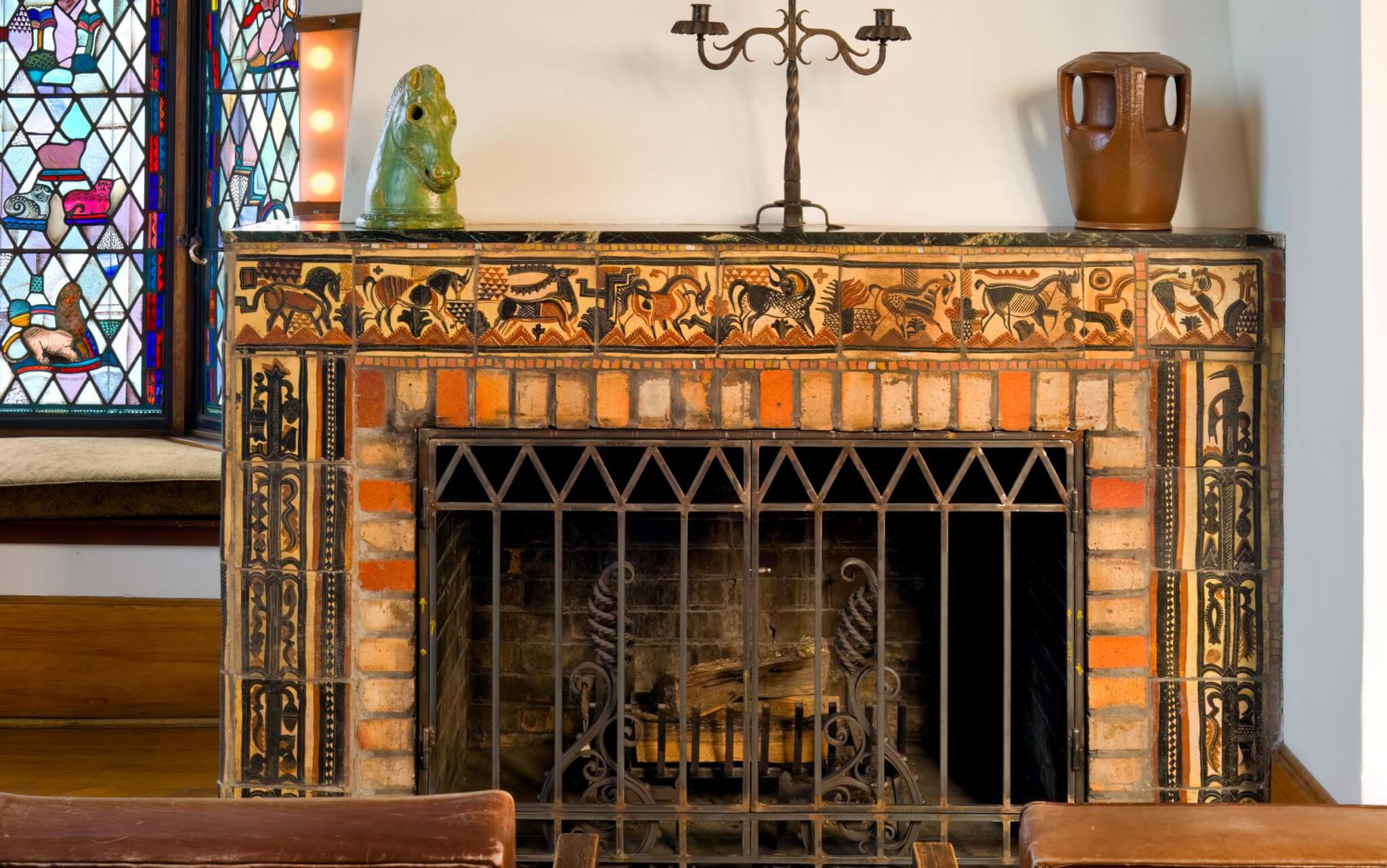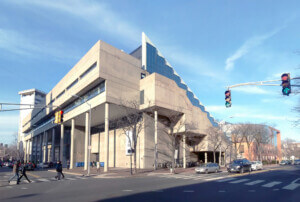Edgar Miller’s Kogen-Miller Studios is one of Chicago’s most idiosyncratic and astonishing architectural sites. Lately, though, it has been ensnared in a disagreement that has shut down public access and programming, as one set of owners of the condo complex in the Near North Side Old Town neighborhood are pushing for landmarking as a way to protect its historic integrity. Founded in 2014, Edgar Miller Legacy (EML) for years hosted tours, residency programs for artists, and other public programming at the Kogen-Miller Studios, one of the best works of Chicago artist and architect Edgar Miller. Designed and built by a rotating cast of early-20th-century bohemian designers, artist, and craftspeople, the Kogen-Miller Studios showcase Miller’s virtuosity across nearly every design medium: stained glass, painting, sculpture, architecture, interior design, and more. The mélange is indicative of a richly representational and often overlooked countercurrent to the dictates of the International Style that were seeping across the Atlantic Ocean from Europe in the 1920s and ’30s.
The Kogen-Miller Studios feature nine units arranged around an internal courtyard. One, the Glasner Studio (restored in late-1920s period-appropriate detail and the main focus of EML’s past programming), is owned by Zac Bleicher, executive director of Edgar Miller Legacy, and his mother, Julie Bleicher. Julie inherited the unit from her brother, Mark Mamolen, who was a close friend of Edgar Miller. Two units are owned by Ronald Cieslak (who declined to comment for this story), and six units are owned by Glenn Aldinger.
“[Edgar Miller Legacy’s] goal was, first, to try to secure the building like my uncle had hoped from these other people and, if it were under one ownership, convert it to a cultural site, like a museum or artist residency,” Zac Bleicher told AN. But much of this has been on hold since 2020, when Zac filed suit against Cieslak and Aldinger for ignoring maintenance needs at the condo complex. Cieslak and Aldinger made the counterclaim that Zac was illegally operating a business from his unit after having soured on the public access offered by EML.

Zac initially felt that his co-owners were allies in EML’s mission. A letter of intent signed by Aldinger and Zac in late 2017 laid out a process and timetable for a sale of Aldinger’s units to EML. The years of tours and events EML hosted seemed to indicate that the complex’s other owners had waived the prohibition against running a business in the condo bylaws. At times, they seemed supportive and even enthusiastic about the public programming. In 2017, Aldinger arranged for the condo association to be added to EML’s insurance policy as an additionally insured party. Also in 2017, emails reviewed by AN show Aldinger telling Zac that he would be willing to forgo a rent hike for one tenant (who had concerns about tours and public programming) to keep that person onboard with public access.
But over time, Aldinger said, he objected to the tours because of their “intrusion, frequency, [and] volume.”
Zac told AN that Aldinger’s support of EML diminished after a 2018 appraisal of the condos by Property Valuation Services. The estimate returned was $3.1 million, which Aldinger said was “so low it was laughable,” and the appraisal couldn’t accurately judge the value of the complex because the appraiser never entered any of Aldinger’s units, since “I was never asked,” said Aldinger. However, in emails from January 2018, a personal assistant to Aldinger told Zac and Aldinger that they could show Aldinger’s units to the appraiser, and Aldinger told Zac that he had informed tenants about the upcoming appraisal.
A sale to EML never materialized. By July 2018, Zac said the organization had moved its offices out of the Glasner Studio (where he still lives), and the final tour of the Kogen-Miller Studios was in February 2020. Meanwhile, Zac grew concerned about the lack of maintenance at the complex.

Zac points to a long list of upkeep needs (tuckpointing the brick, leaks, the condition of balconies and roof decks, boilers) that he said jeopardizes the safety of occupants and the historical integrity of the complex. In late 2019, Speaker of the House Property Inspections issued a 59-page inspection largely consistent with Zac’s concerns, pointing out “serious” rusting of elevated walkways and water damage to the rear of the complex. “They just sat on it,” said Zac. “Then it became a matter of ‘How do we protect the building from itself and its owners?’”
His answer was to sue Cieslak and Aldinger (who have a two-thirds controlling majority in the Kogen-Miller Studios’ condo association) in June 2020 to make them personally liable for damages resulting from a lack of maintenance, force their removal as directors of the condo association, and transfer control of the building to a court-appointed receiver.
Aldinger said the 2019 inspection was “coached by Julie and Zac” and it overestimated the work that needs to be done. He saw it as an attempt by the Bleichers to avoid paying for a majority of maintenance updates before they, potentially, might assume ownership of the entire building. (In January of this year, Aldinger did receive a court order to repair a structural support on a rear balcony.)
Zac acknowledges that the condo association has spent approximately $200,000 on some of the repairs, but said that this figure covers less than half of what needs to be done and that almost none of the work began until after the lawsuit was filed. “We believed that if we didn’t pursue the lawsuit, the needed repairs wouldn’t have been done in a timely or reasonable fashion,” he said.
This ongoing uncertainty caused by years of legal wrangling has Zac looking toward local historic landmarking (which, in Chicago, obligates building owners to receive approval by the landmark commission before making exterior changes to a building) to preserve its historical integrity. It would “allow the city to have more scrutiny over what’s going on in the building and just generally raise the profile of [it],” he said.

Aldinger said that’s what he wants, too—one day: “Everybody agrees, including us, that eventually the place has got to be landmarked—not now.” According to Aldinger, it would be inappropriate to landmark the building before more repairs are completed.
Another Edgar Miller masterwork, Carl Street Studios, is landmarked because of its location in a wider historic district, but the Kogen-Miller Studios remain unprotected because Zac said he’s spent much of his energy on unifying ownership of the complex, since that could make the landmarking process easier.
Historic preservationist Elizabeth Blasius of Preservation Futures said it can be challenging and potentially detrimental to landmark private residences over the objections of owners. “When you get into people’s homes and preservationists choose to mount an advocacy campaign against the wishes of those residential private property owners, it sometimes erodes the public’s trust in preservation,” she said. Resistance to landmarking, said Blasius, is often based on the incorrect assumption that this process totally prohibits making any changes to the exteriors and interiors of buildings. It is also rather rare for interiors to be landmarked at all.
But in Chicago, landmarking residences over owner objections does happen on occasion. “With the exception of certain religious properties, owner’s consent is not a deciding factor regarding the timing of a landmark designation,” said Peter Strazzabosco, deputy commissioner at the Chicago Department of Planning and Development. One example is the John Nuveen House, which the landmark commission voted to landmark without consent in 2019.
Echoing Zac and Aldinger, Blasius told AN that the Kogen-Miller Studios should be landmarked and praised its material detailing, woodwork, and leaded glass. Given Miller’s intensely collaborative nature, she said that landmarking research could uncover the role of other artisans who affected his work at the Kogen-Miller Studios, like Mexican artist Jesús Torres, who influenced Miller immensely.
For Zac, an acceptable end to this legal drama would be for the Kogen-Miller Studios to “be preserved and shared with the public,” he said. Aldinger has a different take: “The building’s lost its joy,” he said. “I’m ready to sell now. I just want to make sure I sell at market rate.”
But EML and Zac may be the only interested buyer until the dueling lawsuits are resolved. “The building has a ton of deferred maintenance, hundreds of thousands of dollars, if not more,” Zac said. “It’s totally dysfunctional. I’m not sure who would want to buy into a condo association in the middle of litigation.”
And while Aldinger said that it’s unlikely anyone would buy into the Kogen-Miller Studios with a mortgage, he still thinks an all cash deal could be made with “high-net-worth folks,” he said. He’s had a bit of interest so far. “I took [philanthropist, investor, and classical architecture enthusiast Richard] Driehaus out for a dinner and showed him the building. He was kind of interested, but never pursued [it],” Aldinger recalled. “He’s dead now, of course.”
Zach Mortice is a Chicago-based design journalist and critic focused on the intersection of design in architecture and landscape architecture and policy.











